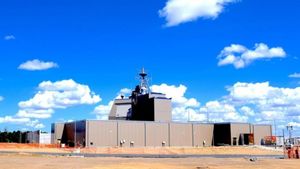JAKARTA - The BMKG confirmed that the Baribis Fault in the south of Jakarta is proven to be active with an estimated shear rate of about 5 millimeters per year.
"In addition, this fault activity is supported by the results of monitoring of the BMKG seismograph sensor equipment where there is earthquake activity observed in the fault line, although it is of a small magnitude of 2.3 - 3.1," said BMKG Earthquake and Tsunami Mitigation Coordinator Daryono in a written statement. in Jakarta, Friday, June 24, quoted from Antara.
BMKG appreciates the results of a study on the activeness of the Baribis Fault in southern Jakarta, which was published in the prestigious journal Scientific Reports (Nature) this year.
Daryono said the results of the study were certainly very valid because they were supported by earthquake data from BMKG monitoring and primary data from field observations by the research team using the latest equipment supported by valid methods.
"Of course the BMKG really appreciates the results of this study, because it makes an important contribution to completing the source and earthquake hazard map in Indonesia. More importantly, the findings can be a reference for earthquake mitigation along the Baribis fault line and its surroundings, such as the big cities of Bekasi, Bogor and Jakarta, " he said.
Daryono said the Baribis Fault structure is estimated to have a length of about 100 km. However, this fault line does not appear to be continuous as a single fault unit.

Rather, it has segments, each of which has a varying length. So there is still a need for further studies to further detail these fault segments.
He confirmed that the fault line passes south of Jakarta as the Jakarta segment, in addition to the segment in the east which can be referred to as the Bekasi - Purwakarta segment. So it can be said that the southern part of Jakarta is vulnerable to earthquakes.
"Of course, with the existence of this active fault line, there is the potential for an earthquake. If you look at the earthquake data from BMKG monitoring, it appears that the southern segment of Jakarta does not show earthquake activity, but the results of the study show a high level of compression, which is thought to be related to a locked area. This is something to watch out for," he said.
Based on the results of the study, the fault line has a significant earthquake potential. Based on BMKG records, shallow crustal earthquake activity due to small active faults can trigger damage.
BMKG has a lot of evidence that small earthquakes even with a magnitude of 4.5 can cause damage because the hypocenter is shallow and the epicenter is close to the surface.
If it turns out that the earthquake that occurs has a greater strength, of course the potential for damage will be even greater.
"The importance of implementing real or concrete mitigation efforts in the Jakarta, Bogor, Tangerang, Bekasi, Karawang, Purwakarta and surrounding areas is to create earthquake-resistant buildings with strong structures and earthquake risk-based spatial planning that refers to the earthquake hazard microzonation map at a scale details," he said.
In addition, all levels of society need to understand the skills of surviving an earthquake, there needs to be massive education and ongoing evacuation drills, not only to anticipate earthquakes due to the Baribis Fault but also to anticipate the potential for megathrust earthquakes whose sources are far away and can have an impact as far as Jakarta, he said. Daryono.
The English, Chinese, Japanese, Arabic, and French versions are automatically generated by the AI. So there may still be inaccuracies in translating, please always see Indonesian as our main language. (system supported by DigitalSiber.id)













